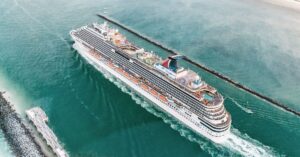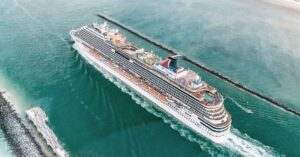
Russian Warships Arrive In Cuba Ahead Of Military Drills In The Caribbean
June 13, 2024
Kongsberg Maritime Unveils “Super-Efficient Bulker” Design Promising 40%- 50% Fuel Savings
June 14, 2024

The Port of Seattle emerged as the first port in the nation to independently need 100% of cruise vessels to be homeported in Seattle, to be shore power capable, and to make optimum use of shore power.
The order that was passed by the Port of Seattle Commission will be effective in the 2027 cruise season, three years prior to the port’s earlier goal of 2030.
Making sure that homeported cruise ships use shore power by incorporating a requirement in commercial deals, the port continues demonstrating how economic opportunities can be generated while reducing the impact on communities as well as the climate, mentioned Fred Felleman, the Port of Seattle’s Commissioner, who reportedly sponsored the order.
In passing the order, the Commission transforms the 2030 goal of the port of universal shore power use into a requirement of 2027, which is possible owing to the major investments made by the cruise industry and the port in both vessels and shoreside facilities.
Marketing these investments must appeal to the ecological interests of travellers who have decided to cruise to Alaska.
Hamdi Mohamed, the Port of Seattle Commission’s President, co-sponsored the order, which highlights the Commission’s focus on augmenting shore power—a strategy for slashing emissions in the broader maritime sector.
Given the sustained investment in shore power, efforts must be made to make sure that the homeported vessels are plugging in when berthed at the piers.
The order is a comprehensive policy that reflects the commitment to oversight and accountability of such a sustainability strategy.
Plugging in shore power helps lower diesel emissions generated via cruise vessels by 80% at berth on average.
During last year’s season, cruise vessels harnessing shore power could avoid the emission of 2,700 metric tons of greenhouse gases along with 0.75 metric tons of diesel particulate matter — that equals almost 650 passenger cars driving for a year.
The port is also finalizing the electrification of Pier 66 and envisions linking cruise vessels to shore power this summer.
Such a milestone is expected to make shore power accessible at all three Seattle cruise berths that will manage to meet the Northwest Ports Clean Air Strategy target of electrifying cruise berths by 2030, six years before schedule.
It will establish Seattle as one of the first cruise ports to extend shore power at several berths.
In 2004, the Port of Seattle, via significant investments made by Carnival Corporation, became the first-ever homeport based in North America to offer shore power at the two cruise berths.
Carnival, along with other cruise operators, continues to utilize the infrastructural investments, with nearly 66% of cruise calls enabled to plug in.
The port further continues to work in association with cruise ports located in Alaska, Victoria, BC, and Vancouver, BC, and the cruise industry to largely explore the first cruise-specific Green Corridor in the world from Seattle to Alaska, using unique decarbonization techniques.
The Port of Seattle has also launched a cruise dashboard that can track passengers, as well as economic and environmental metrics.
The data received from 2023 is currently available.
Reference: Port of Seattle
Port Of Seattle Becomes First In U.S. To Mandate Shore Power For All Homeported Cruise Ships appeared first on Marine Insight – The Maritime Industry Guide
Source: Maritime Shipping News


